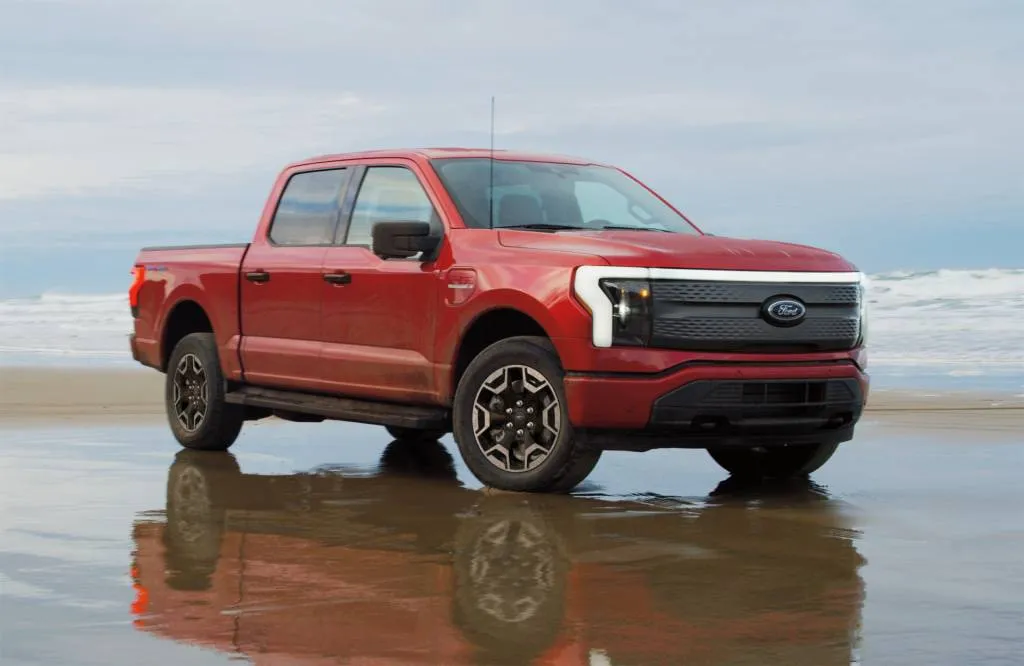Tesla pioneered over-the-air (OTA) software updates as a convenient way to add new features and fix issues. Legacy automakers have been slow to catch up—and there's a reason for that, says Ford CEO Jim Farley.
To save costs, Ford farmed out development of vehicle control modules, which govern the operation of everything from engines to seat adjusters, to suppliers like Bosch, Farley explains on a recent episode of the Fully Charged Show podcast, starting around the 25-minute mark. This allows Ford to pit suppliers against each in competitive bidding, saving about $500 per vehicle produced, but means Ford must use a supplier's software for a given module.

2023 Ford F-150 Lightning
"They don't talk to each other," Farley said. "So even though it says 'Ford' on the front, I have to go to Bosch and get permission to change their seat-control software."
The suppliers own the software in modules they supply to Ford, and the sheer number of suppliers—about 150, according to Farley—makes managing vehicle software difficult.
Ford is trying to address this by completely in-sourcing its next-generation electrical architecture, Farley said, and writing more software in-house. But that presents its own challenge. Engineers used to working on previous generations of internal combustion vehicles lack the necessary software experience, while dedicated software engineers lack experience with safety-critical automotive systems, Farley said, citing this as a reason for the company's 2022 business split into EV and non-EV passenger-car units.
Ford began a shift to OTA updates with the Mustang Mach-E electric crossover, and has added features like enhanced Amazon Alexa voice controls this way. For some of the earliest customers, Ford also enabled its BlueCruise driver-assist system through an OTA update after purchase. But other automakers have been more nimble with OTA updates.
While some recalls still require a service center visit, Tesla has been able to eliminate the need for many by uploading new software. Lucid even narrowed a recall pool with a piece of software pushed to its vehicles. Jaguar, meanwhile, showed the possibilities for legacy automakers with an OTA update to battery energy control module software addressing battery fire concerns.












